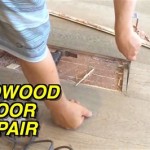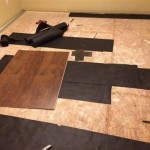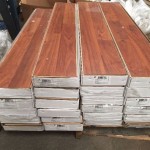How to Waterproof Chipboard Flooring: A Comprehensive Guide
Chipboard, also known as particleboard, is a widely used flooring material due to its affordability and durability. However, it is not inherently waterproof and requires proper treatment to protect it from moisture damage. Waterproofing chipboard flooring is crucial to maintain its integrity and extend its lifespan. This guide provides a detailed overview of the essential steps involved in waterproofing chipboard flooring.
Step 1: Preparing the Floor
Before applying any waterproofing materials, it is essential to prepare the chipboard flooring. Ensure the floor is clean, dry, and level. Remove any existing dirt, debris, or adhesive residue. If there are any gaps or holes in the flooring, fill them using a suitable wood filler or caulk.
Step 2: Choosing the Right Waterproofing Method
There are two primary methods for waterproofing chipboard flooring: surface treatments and membrane applications. Surface treatments involve applying a liquid or paint-on sealant directly to the flooring, while membrane applications involve installing a physical barrier between the chipboard and the moisture source.
Surface Treatments
- Polyurethane Sealants: These sealants provide a protective layer that repels water and moisture.
- Epoxy Coatings: Epoxy coatings form a hard and durable barrier, offering excellent resistance to moisture, chemicals, and abrasion.
- Acrylic Paints: Acrylic paints can be used as a moisture barrier, but they may not provide as much protection as specialized sealants or coatings.
Membrane Applications
- Liquid Rubber Membrane: Liquid rubber membranes are applied as a liquid and cure into a flexible, waterproof barrier.
- Plastic Sheet Membrane: Plastic sheet membranes are installed as a physical barrier between the chipboard and the moisture source.
Step 3: Applying the Waterproofing Material
Follow the manufacturer's instructions carefully when applying the waterproofing material. Ensure the flooring is completely covered and that all seams and edges are properly sealed. For surface treatments, apply multiple coats for optimal protection. For membrane applications, install the membrane according to the specific instructions, ensuring there are no gaps or tears.
Step 4: Curing and Maintenance
Allow the waterproofing material to cure completely before using the floor. Curing times vary depending on the type of material used. Once cured, the floor should be maintained regularly to ensure its continued protection. Clean the floor with a damp mop or cloth, and avoid using harsh chemicals or abrasives.
Additional Waterproofing Tips
- Ventilation: Ensure the floor area is well-ventilated to prevent moisture buildup.
- Slope the Floor: If possible, install the chipboard flooring with a slight slope to facilitate water runoff.
- Use Waterproof Adhesives: When installing the chipboard flooring, use waterproof adhesives designed for use with moisture-prone environments.
Conclusion
Waterproofing chipboard flooring is crucial to protect it from moisture damage and prolong its lifespan. By following the steps outlined in this guide, you can effectively waterproof your chipboard flooring, ensuring it remains durable and aesthetically pleasing for years to come.

Particle Board Flooring And Waterproofing

How To Seal Particleboard For Your Diy Projects Home Efficiency Guide

Preparing A Chipboard Floor For Painting Property Home Survive France

Chipboard Flooring Sheets Materials Market

Tg4 P5 Chipboard Flooring

Designing With Versatility Using Chipboard In Interior Spaces

Tg4 Weatherproof Chipboard Flooring 2400x600x22mm

Tough P5 Flooring With A Waterproof Coating Cabershieldplus

Tiling On Wooden Floors Part 4 Overboarding Bathroom Guru

22mm X 2400mm 600mm Egger Lclean Xtra Chipboard Flooring Brighton
See Also







